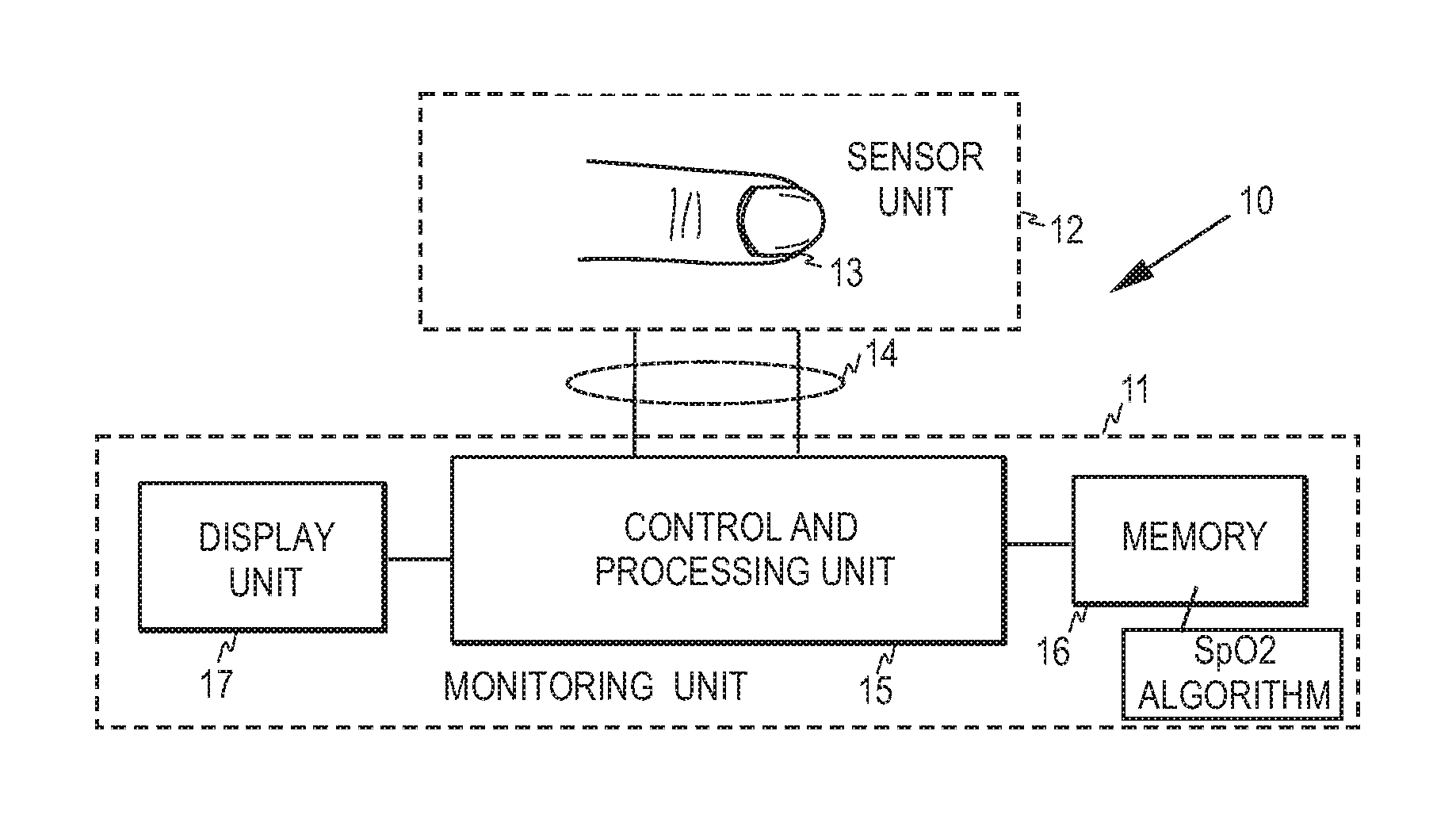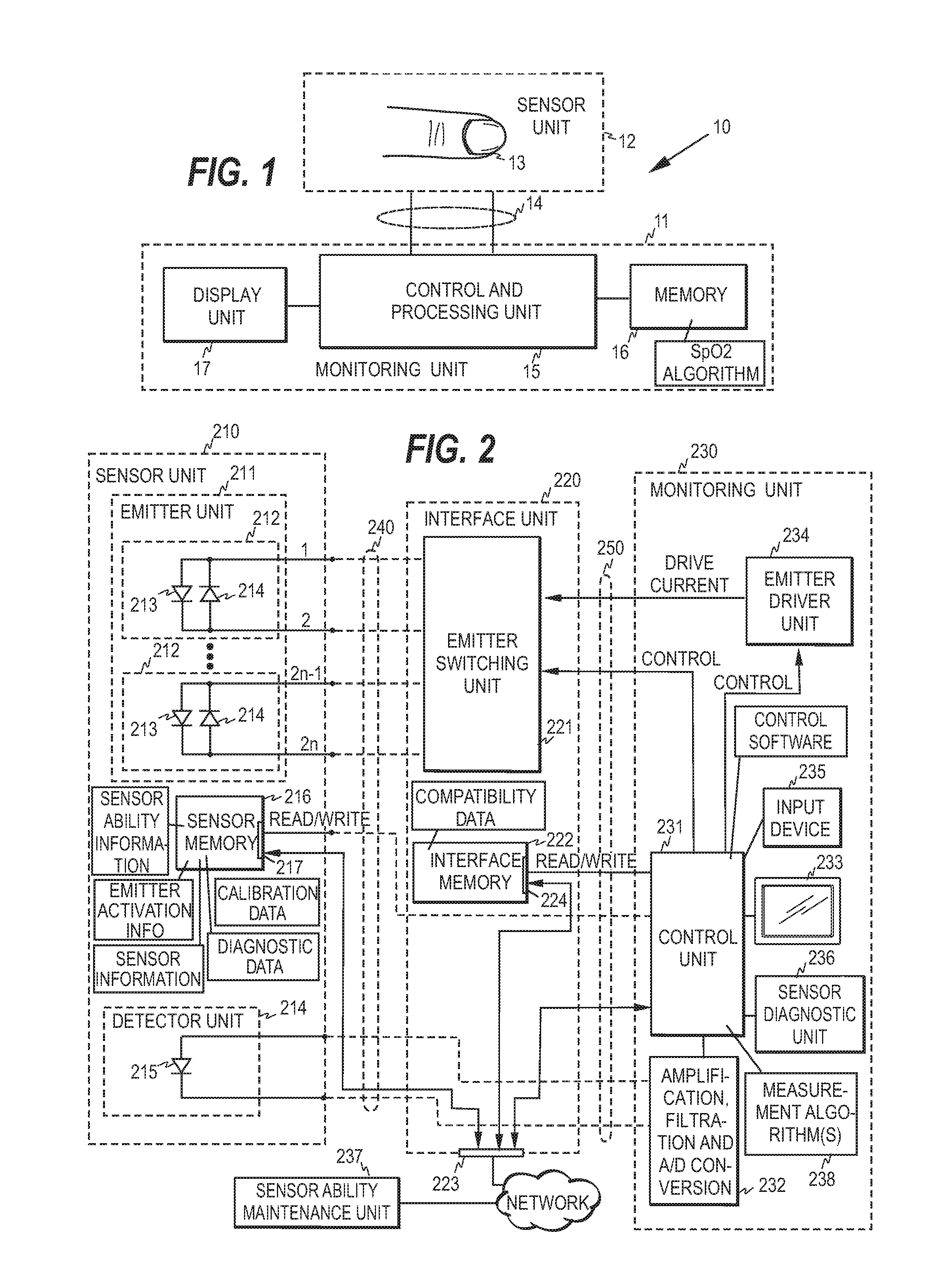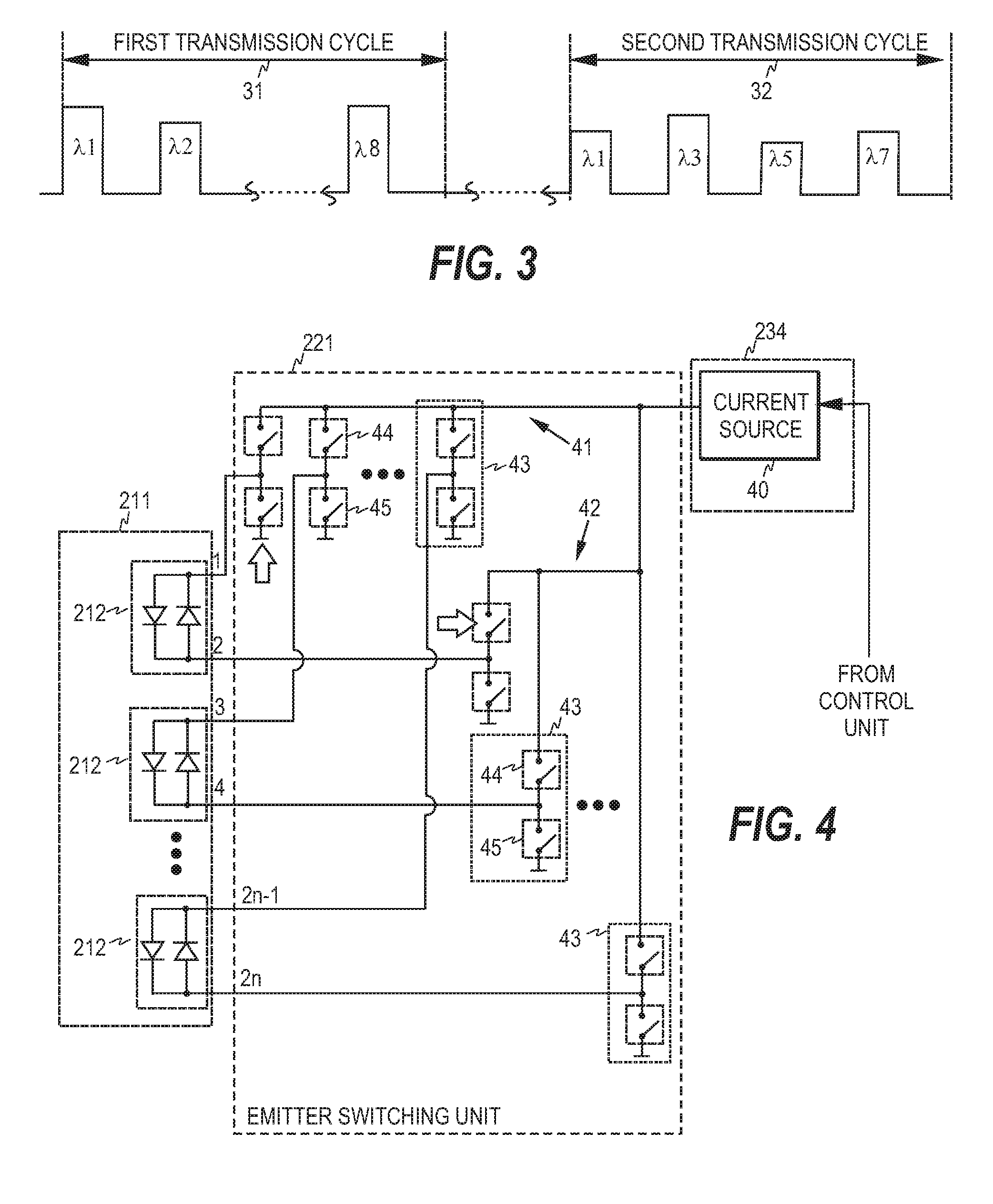Multiple wavelength physiological measuring apparatus, sensor and interface unit for determination of blood parameters
- Summary
- Abstract
- Description
- Claims
- Application Information
AI Technical Summary
Problems solved by technology
Method used
Image
Examples
Embodiment Construction
[0021]FIG. 1 illustrates the basic elements of a conventional pulse oximeter 10. A pulse oximeter normally comprises a bedside monitoring unit 11 and a probe or sensor unit 12 attachable to a subject, typically to a finger 13 or ear lobe of the subject. The sensor unit is normally connected to the monitoring unit through a cable 14. The monitoring unit may be conceived to comprise three basic elements: a computerized control and processing unit 15, a memory 16 for the control and processing unit, and a display 17 for displaying information to a user of the pulse oximeter.
[0022]The sensor unit normally includes light sources for sending optical signals through the tissue and a photodetector for receiving the signals transmitted through or reflected from the tissue. On the basis of the transmitted and received signals, light absorption by the tissue may be determined. During each cardiac cycle, light absorption by the tissue varies cyclically. During the diastolic phase, absorption is...
PUM
 Login to view more
Login to view more Abstract
Description
Claims
Application Information
 Login to view more
Login to view more - R&D Engineer
- R&D Manager
- IP Professional
- Industry Leading Data Capabilities
- Powerful AI technology
- Patent DNA Extraction
Browse by: Latest US Patents, China's latest patents, Technical Efficacy Thesaurus, Application Domain, Technology Topic.
© 2024 PatSnap. All rights reserved.Legal|Privacy policy|Modern Slavery Act Transparency Statement|Sitemap



